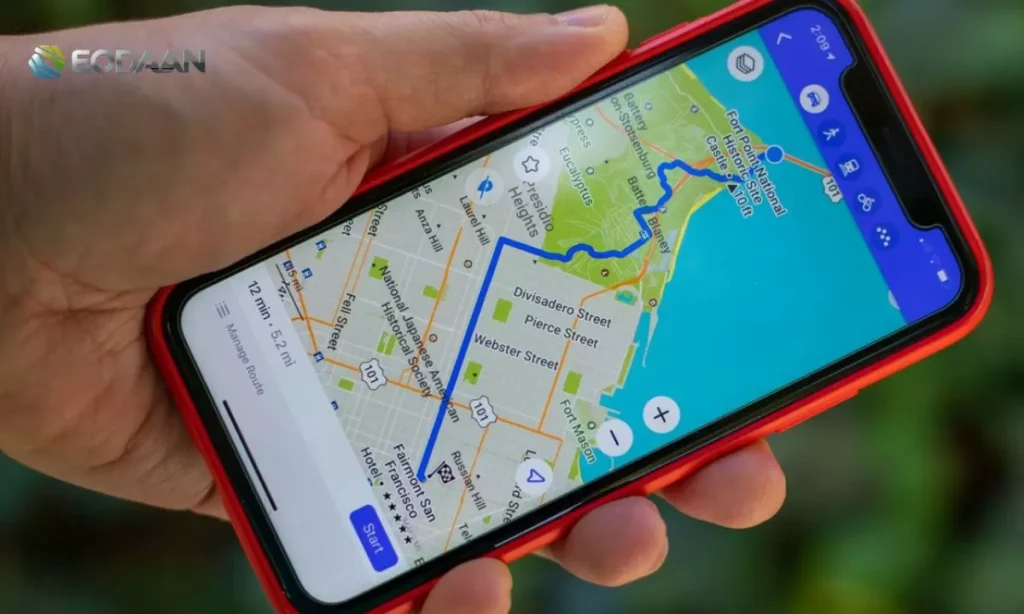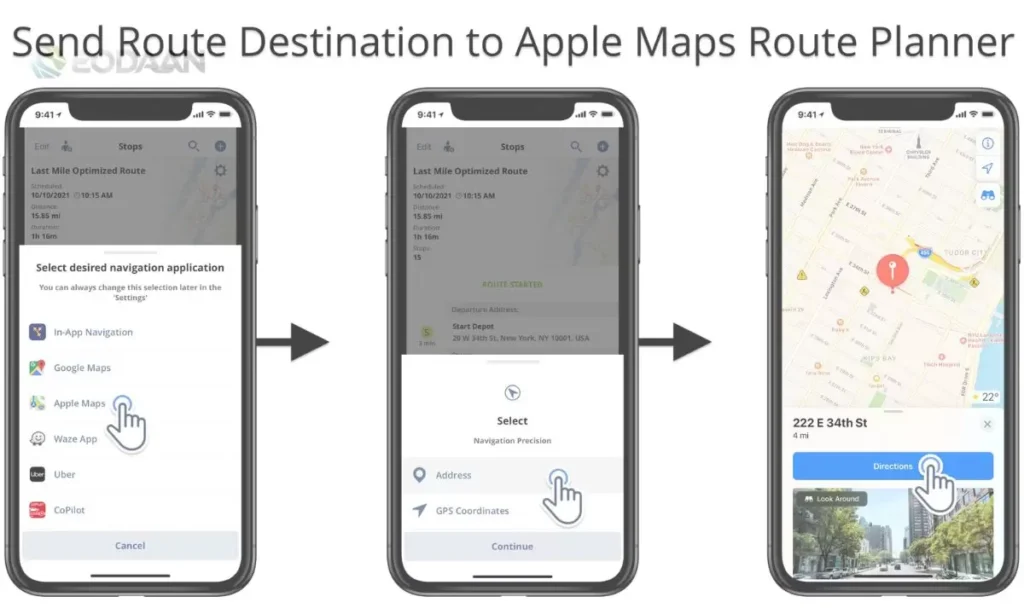Navigate Me Home: (OK Google Take Me Home 2024)
Getting to your destination safely and efficiently is crucial when traveling, whether commuting daily or going new places. In recent years, voice powered navigation has transformed the way we get around thanks to advancements in AI assistants and speech recognition technology. Brands like Google have integrated hands free direction capabilities into their mapping and assistant apps, allowing users to easily navigate hands free just by speaking.
This article will outline how to set up voice command navigation features like “Navigate Me Home” using Google Assistant on both Android and iOS devices. It will also explore the conveniences and future of voice guided directions.
For Android Users: Navigate To Home

For those with an Android smartphone, setting up a default “home” address for voice navigation is straightforward. Here are the step by step instructions:
- Open the Google Assistant app. This comes pre installed on most Android devices, but you can download it from the Google Play Store if needed.
- Tap on the menu button, represented by three horizontal lines, in the top left corner of the app.
- Select “Settings” from the menu.
- Choose “Transportation” from the list of settings options.
- Under the “Home & Work” section, tap the button to “Add address”.
- Enter your full home address in the form provided, including street name, house number, city, state and zipcode.
- Hit “Save” to store this location.
Now your home address will be recognized when using voice commands with the Google Assistant. Some examples include “Hey Google, navigate me home” or “OK Google, take me home”.
When one of these phrases is spoken, the Assistant will automatically use your device’s GPS to start providing turn by turn directions right to your front door. All navigation instructions will be spoken aloud so you don’t have to look at your phone while driving. Just follow the prompts to safely reach your residence hands free.
For frequent commutes, setting up voice navigation to your home is a convenient way to skip manually entering your address each time. Google’s AI is highly accurate at understanding the intent behind phrases like “take me home” and routing you efficiently based on real time traffic conditions.
Like This Blog: SWGoH Webstore
Using The “Take Me Home Google” Command
Once you’ve saved your home address through the Google Assistant settings, you can use intuitive voice commands to quickly navigate there from any location. Some of the most common phrases recognized are:
- “Hey Google, take me home”
- “OK Google, navigate home”
- “Google, give me directions to my house”
- “Google, navigate me home”
The Assistant understands you want directions to the address stored in your home profile. As soon as the command is spoken, it will immediately start providing audible turn by turn navigation instructions to guide you all the way to your front door.
Helpful pointers will include things like “Take a left onto Main Street” or “In 500 feet, your destination will be on the right.” Your phone’s GPS tracks your movement and updates the eta as you drive. This allows fully hands free operation so you can keep your eyes on the road.
Some key benefits of using the “take me home” voice command include:
- No manual address entry required each time simplifies the process.
- Automatic access to real time traffic conditions helps optimize the fastest route.
- Ability to subtly confirm directions without looking at your maps reduces distraction.
- Friendly voice guidance gives reassurance you’re going the right way.
Whether commuting after work or returning late, the “Take Me Home Google” command streamlines safety conscious navigation with just your voice.
Why Use Google’s “Navigate To Home”?
Setting up a dedicated home navigation voice command through the Google Assistant offers several advantages over manually searching your address each time:
- Convenience: Saying “Take me home” is simpler and faster than typing your location. This is especially useful when driving.
- Safety: Hands free voice guidance minimizes distractions so you can keep your eyes on the road. Navigation is a major source of phone linked accidents.
- Up to date routing: Google maps utilizes real time traffic insights to route you on the quickest path. Unexpected delays are automatically considered.
- Customizability: Designating one address as “home” allows adding other common places like work or a friend’s house for one word navigation.
- Efficiency: Bypassing entry streamlines the process when navigating to your most frequent destination multiple times a week.
- Accessibility: Voice commands improve independent navigation for vision impairments or unsafe handling situations like cycling in traffic.
Voice activation also autopilots directions if forgetful, avoiding getting lost without maps. The home address acts as a default navigation target using only natural speech.
Overall the hands free “Navigate Me Home” option streamlines the commute while minimizing potential distractions.
For iPhone Users:

While the Google Assistant is available through both operating systems, there are some distinctions in setup between iOS and Android devices. Follow these steps to add your home on iPhone.
How To Set Up The Google Assistant App On An iPhone?
Setting up the Google Assistant on iPhone takes just a few minutes. The key steps are:
- Download the app from the App Store
- Sign in with your Google account credentials
- Tap “Explore” then go to app “Settings”
- Select “Transportation”
- Enter your home address for navigation
- Make sure Location Services is enabled for accurate GPS routing.
How to Add Home Address in the Google Maps:
You can also enter your address directly through the default Maps app:
- Open Google Maps and tap your profile image.
- Select “Your places” then “Add home” to input location details.
- Hit save to store this for future voice navigation requests or map searches from within Maps.
Like This Blog: Kingymab
Tips For Using Your Home Address In Google Maps
To get the most out of location based features in Google Maps, follow these tips:
- Ensure accurate home address: Double check the street name, number, city, state, and zip code are all correct. Precise details help navigation.
- Enable Location Services: Select “Maps” from your iPhone settings and allow location tracking for real time GPS routing.
- Add as Favorite: Tap the house icon when viewing your address to flag it as a Favorite. This makes it easily selectable for directions.
- Update after moving: Don’t forget to modify your address in Google Assistant and Maps if relocating to a new home.
- Use voice commands: Phrases like “Navigate me home” work best for hands free directions from Maps using the Apple Watch or CarPlay.
- Check for alerts: Maps may notify you about traffic, new route options, or revised ETAs when navigating to frequent stops.
- Share home address: Your home address is automatically shared in your Google/Gmail profile for easy including in communication.
By carefully setting and maintaining location details, Google Maps remains accurate for personal and work navigation needs through voice or manual search.
Navigate Me Home with the Apple Map App

For iPhone users who prefer Apple’s default mapping application, it’s still possible to navigate home using just your voice through Siri voice control.
The steps are:
- Open the Settings app and select “Siri & Search”.
- Turn on the toggle switch next to “Listen for ‘Hey Siri'” to enable the wake command.
- Return to the home screen and say “Hey Siri” then ask for directions.
- Common voice requests include “Take me home”, “Navigate me home” or “Give me directions to my house”.
- Siri will launch Apple Maps and provide turn by turn guidance as long as your home address is set as a Favorite location.
To add your home, open Maps and tap the heart icon next to the address when viewing it. Then it will appear under “Favorites” for quick voice access.
Just like with Google Assistant, Apple users gain hands free navigation functionality without need to manually enter destinations. Siri’s integration with Apple Maps allows safe, seamless routing straight to your front door with minimal effort or distraction.
Take Me Home Google on Your iPhone and Android
Whether using an Apple or Android device, the steps to set up hands free “Navigate Me Home” functionality are quite similar through the Google Assistant.
For iPhone Users:
- Download the Google Assistant app from the App Store.
- Add your home address by going to the app Settings and selecting Transportation.
- Ensure Location Services is enabled for accurate navigation directions.
- Once configured, say “Hey Google, navigate me home” for turn by turn guidance.
For Android Users:
- Open the pre installed Google Assistant app.
- Input your home address through the Settings and Transportation options.
- With the address saved, vocalize “OK Google, take me home” for voice powered navigation right to your doorstep.
Both platforms allow leveraging the helpful functionalities of Google Assistant for completely hands free commute directions. Just speak clearly for immediate route guidance with no device handling required.
Voice Command Options
While the most common phrase for navigating home through Google Assistant is “take me home”, there are actually a variety of natural language requests that will be recognized:
- “Hey Google, navigate home”
- “OK Google, give me directions home”
- “Show me how to get to my house”
- “Route me to my home address”
- “OK Google, navigate me home”
You can also get more specific by mentioning the actual address if preferred over just “home”:
- “Take me to 123 Main Street”
- “Navigate to 345 Oak Avenue”
And when asking for directions somewhere new without a saved place, state the full location:
- “Directions to Central Park New York”
- “How do I get to Times Square in Manhattan?”
Some other related commands include:
- “Read out my navigation instructions”
- “Am I going the right way?”
Testing different phrasings can help you find the most natural voice request style. And Google Assistant continues to expand its vocabulary, so new variations will be understood over time too. The key is clarity and context for the AI to discern navigation intent.
Why You Should Set Up “Navigate Me Home”
There are several important reasons why designating a default home address for navigation through Google Assistant is useful:
- Safety: Hands free voice commands allow fully concentrating on the road instead of manually searching for directions. This reduces distractions that can lead to accidents.
- Simplicity: Saying “take me home” is less complex than entering your address each time or scrolling through previous destinations. One phrase does it all.
- Efficiency: Skip redundant typing for frequent commutes. Navigating home also becomes instinctive if ever disoriented without map access.
- Accuracy: The automated system ensures your exact address is used versus human errors entering it manually in a moving vehicle.
- Optimization: Google utilizes real time traffic insights specific to your route for scheduling optimal departure times and recommending alternate paths during delays.
- Accessibility: Voice activation allows independent navigation assistance for those unable to see maps clearly or interact with touchscreen devices while driving or cycling.
Preset home directions streamline the most habituated trips for utmost safety, speed and hands free convenience given today’s busy schedules and traffic conditions. It’s a helpful tool worth taking five minutes to set up.
Tips for Using Voice Navigation
To optimize voice guided navigation experience:
- Speak Clearly: Enunciate requests and responses slowly and loudly for best voice recognition.
- Learn Street Names: Practice pronouncing challenging streets ahead of time so they’re understood correctly.
- Adjust Volume: Ensure navigation instructions can be heard over music/calls or raise if ambient noise is loud.
- Confirm Directions: Asking “Am I going the right way?” reassures you haven’t missed a turn without checking maps.
- Update Home Address: Notify Assistant if you’ve relocated to keep directions accurate.
- Add Locations: Saving frequently navigated spots like work improves one word access.
- Enable Notifications: Allow alerts if traffic impacts estimated route time to find alternatives.
- Check Connection: Navigation relies on data so confirm internet strength before long drives.
- Charge Device: Fully power phones/GPS units prior to all day navigation use.
- Stay Calm: Stress can unintentionally influence speech recognized by AI. Take a breath if directions don’t compute.
With practice, you’ll comfortably navigate solely using your conversational skills.
The Future of Voice Navigation
As artificial intelligence and voice recognition technology continues advancing rapidly:
- More Natural Interactions: Conversation abilities will evolve to feel more natural like speaking with a human instead of rigid commands.
- Deeper Connected Assistance: Voice guidance will integrate even more tightly with smart vehicles via CarPlay or Android Auto as well as IoT navigation devices.
- Personalization: AI assistants will utilize aggregated data on individual travel patterns to offer predictive rerouting recommendations before delays occur.
- Proactive Updates: Real time traffic insights will enable assistants to proactively send notifications regarding developing issues like accidents that impact ETAs.
- Immersive Experiences: AR enabled devices may overlay turn by turn directions onto live street views for orienting in unfamiliar areas.
- Multimodal Input: Combining speech, touch, and gesture will streamline natural interaction with advanced navigation interfaces.
- Collaborative Travel: Groups can sync navigation plans and share travel updates seamlessly between connected devices.
- Advanced Translation: On demand spoken translation will navigate users anywhere in the world through seamless dialect interpretation.
The future promises entirely conversationally powered navigation become even more seamlessly integrated and personalized through continued innovations in AI and speech technologies.
FAQ’s
Conclusion
With a quick and easy setup through the powerful Google Assistant, anyone can now effortlessly navigate between locations using just their voice. Whether routinely commuting home from work or traveling somewhere new, the handy “Navigate Me Home” and “Google Take Me Home” features ensure navigation directions are delivered safely and conveniently. As AI and voice recognition technologies continue advancing rapidly, the future promises entirely natural conversational abilities for interactive guidance.
With further improvements and integration between maps, vehicles and smart devices, voice commands will transform the way we explore new places and commute to familiar destinations. The added safety and simplicity of hands free navigation through Google Assistant makes regularly setting up “Navigate Me Home” worthwhile for daily routines.







